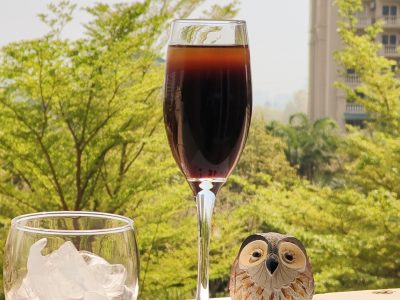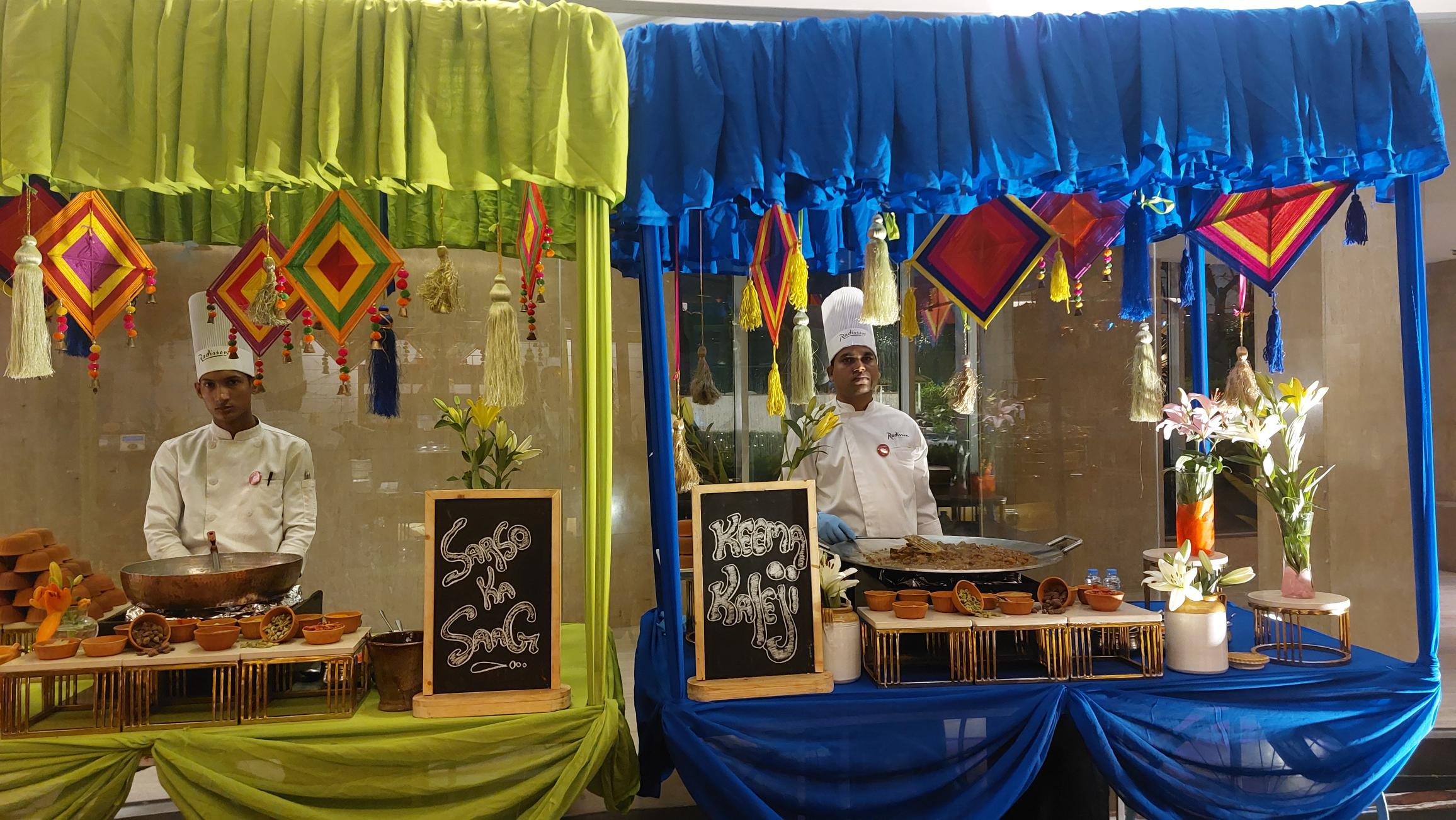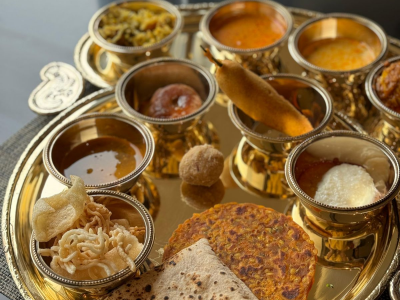With its different architectural wonders and rich culture, Bali offers a trip to cherish for long
“There was a time when donning a sarong and sash would have been a must here but now the rules are fairly relaxed,” a local photographer tells me as he offers to click a picture of mine against the backdrop of the multi-tiered temple tower at the sprawling Pura Ulun Danu complex in Bali. I smile into the elderly gentleman’s camera as he takes my picture and it’s only a matter of minutes that a postcard-size (cardboard) framed photo is handed to me — for a price, of course.
As I sit under the shade of a temple pagoda, it’s difficult not to be charmed by the vistas that open out — complete with the Bedugul mountains in the distance and the gently lapping waters of the beautiful Lake Beratan close by. “Since it stands right at the edge of this lake, the temple, from a distance, seems to be floating on its surface,” says my affable Balinese guide Pu Suta. “In fact, you could call it a non-floating floating temple. And when the waters of the lake rise, it certainly appears so,” adds a fellow visitor from Jakarta, Iwayan Suteja Indrajaya.
We have just walked past an entrance referred to as Gates of Heaven with its beautifully ornate high pillars. “Not for nothing is Bali called the Island of the Gods and structures like these are among hundreds of Instagrammable backdrops it offers,” says Suta as I stop to admire the different architectural wonders of this complex dedicated to the Hindu Trinity of Brahma Vishnu Mahesh.
Way back in the 17th century, the kings of the time built this temple to also let farmers worship Dewi Danu, the goddess of water. “The lake here is almost as sacred for us as River Ganga is for you in India,” he says and then pointing to the colourful dragon-boats that silently bob on the lake waters adds, “Many believe that, after dark — once everyone has left — real dragons descend from the heavens to play here.”
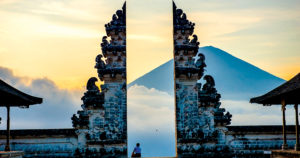
Charming stories such as these abound on this island that boasts about 80 per cent of Hindu population. “We have no oils or minerals but just a very colourful culture and traditions — that’s what makes us rich. And that’s what attracts people from across the world to Bali,” Suta says. Later, as we sit enjoying a local meal, he points towards the owner making a ‘canang sari’ offering at the entrance of his restaurant. In a ‘dona’ like banana-leaf plate, the man wearing the traditional songket saput (sarong) and udeng (head covering) has placed flowers and a spoonful of rice for the gods and the five elements. “You’re sure to find these on the floor outside doorways of almost every home and restaurant across Bali,” our local friend Luthfan Hanif Pallevi adds. “And yes, the genial elephant-god Ganesha too sits at the entrance of homes and important buildings of Bali.”
Driving through the city, seeing the splendid stone markets offering mammoth to small-sized statues of gods and goddesses, it’s evident that religion plays a major role in the life of most Balinese. Almost every house has a temple and dwarpalas keep guard outside to keep negativity at bay. What’s intriguing are black-and-white check cloths tied around not just their waists but also that of tree trunks. “It’s about giving them respect and yes, letting the colours remind us that life is all about ups and downs, good and bad,” says Suta as we head towards one of the piece(s) de resistance of Bali.
We’re talking about the mammoth 400-ft high Garuda Wisnu Kencana (GWK) statue that’s fast becoming an iconic part of the island’s skyline. Although walking up to it is an option, we prefer the golf carts that take you past huge mountainous boulders, a massive Ganesha statue towards the base of the GWK idol. For an up-close and personal view of the copper-and-brass statue of the mighty bird and the Preserver of the Hindu Holy Trinity who is seen holding a lotus flower, mace, conch and discus, a lift is available.
Later, close to sunset, we arrive at the entrance of Perlindungan Pura Tanah Lot. Going past a vibrant market selling a variety of beachwear and traditional souvenirs, we come close to a beautiful, quaint old temple that stands on a large offshore rock braving a constant onslaught of the strong waves. Needless to say, its silhouette against the tangerine-hued waters of the setting sun offers a breath-taking sight.
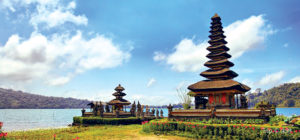
From a fruit stall within the temple precincts, we pick up a plate of mangoes sprinkled with salt and red chilies (a preparation that the locals love eating). As we savour its tangy taste, an old-timer tells us that this edifice, one of seven major sea temples around the Balinese coast, was built to appease the sea god Deva Baruna. “Hundreds of sea snakes, headed by a giant one, guard the temple from evil spirits,” he adds and laughs as we visibly shudder.
No visitor’s experience in Bali is complete without watching the Kecak, Suta tells us and soon we find ourselves at the charming Barong Sahadewa cultural studio. For the uninitiated, this dance form that was developed in the 1930s is based on the epic Ramayana. As the monkey chant of ‘chak chak chak’ rant the air, a ‘choir’ of over 100 men take to the stage. As they sit cross-legged moving unobtrusively around on the amphitheatre platform, the spectacular Balinese dance-drama around Sita’s kidnapping in the forest begins to unfold. And soon, vanars led by Hanuman, help Rama fight and defeat the evil Ravana in a powerful performance that sure leaves us moved…rather, in a trance for the rest of the evening.
FACT FILE
• Bali is connected with Singapore Airlines, Malindo, Malaysian Airlines and Thai Airways from Delhi
• Accommodation: Ramayana, Sol House Bali, among others
• Currency: The Rupiah is the official currency. 1 Indonesian Rupiah equals 0.0051 Indian rupee
• Shopping: Bali offers great experiences at the Krisna Oleh-Oleh, Kuta Market and Ubud Market for street side shopping
• Suggested must-dos: Kintamani Highland that boasts of Mount Batur, a dormant volcano, Tanjung Benda Beach and the neighbouring islands of Nusa Lambongan and Nusa Penida



